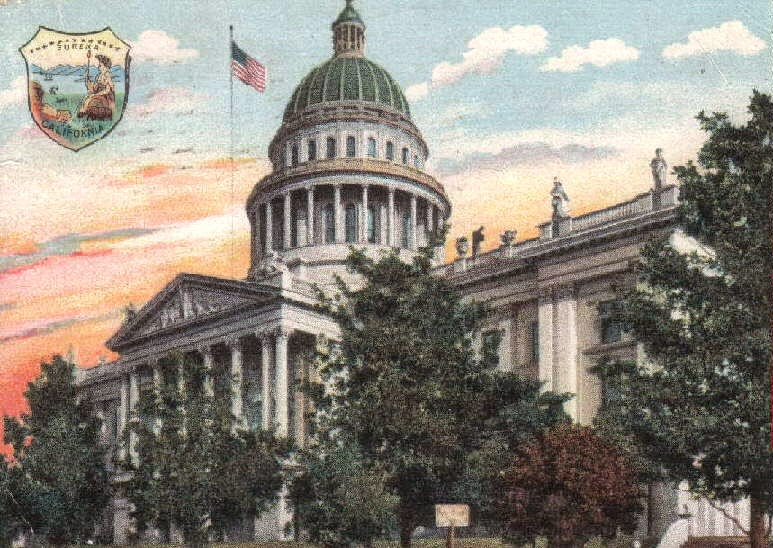in the sanctified certainty of the New Testament.
In "Waiting for Godot", Gogo puzzles over the seeming discrepancy of the Four Gospel accounts. Two of the gospels record that two thieves were hung alongside Jesus, and they jeered and reviled Him. In one Gospel, Luke's account, one of the thieves ask Jesus to remember when He comes into His kingdom. John's gospel does not even mention the reviling from the thieves who were crucified on Jesus' right and left.
Gogo assumes (incorrectly, an element which is ultimately irrelevant) that every gospel writer was a physical witness to the Crucifixion, and therefore their accounts should agree completely. Because the four accounts do not relate the same exchanges between the thieves and Christ, Dodo resigns himself to doubt, and the two characters reminisce about the emptiness of their hollow expectation for "Godot", which many suggest was Beckett's own reviling against God.
In truth, there is no contradiction in the Gospels. Each of the four Gospels present a different aspect of Jesus Christ, and respects the needs of specific audiences. Four Gospels representing the Fourth Man in the Fire (cf Daniel 3:25), speaking of the Fourth Word in the entire Bible — the untranslated particle Aleph-Tav and signature of Jesus Christ, the Alpha and Omega. Like the vision Ezekiel received of the Coming Messiah, Matthew relates Jesus' Kingly Authority, Mark describes His service as the Ox/Sacrifice of mankind. Luke presents Jesus as the Son of Man, and John affirms the divinity of Christ Jesus.
First, let us review the first two accounts, in which the thieves rail against Jesus Christ as He hung on the Cross:
"The thieves also, which were crucified with him, cast the same in his teeth." (Matthew 27:44)
and in Mark:
"And with him they crucify two thieves; the one on his right hand, and the other on his left." (Mark 15:27)
Followed by:
"And they that were crucified with him reviled him." (Mark 15:32)
So far, the harmony of the Gospels is not broken. Two thieves, hung on Jesus' right and left, confirm John's account that He hung in the midst (cf John 19:18).
Luke's account relates more of what took place at Calvary between Jesus and the two thieves:
"And there were also two other, malefactors, led with him to be put to death."
(Luke 23:32)
So far, nothing different or contradictory. Then Luke records a statement made by our Savior, one which no other Gospel writer was directed to write:
"Then said Jesus, Father, forgive them; for they know not what they do. And they parted his raiment, and cast lots." (Luke 23:34) The account regarding the casting of lots also appears in Matthew and John. The key difference in Luke's Gospel is the Jesus preaching of forgiveness of sins in full conjunction with the Finished Work of the Cross. Jesus died on that Cross, reconciling us to the Father (cf 2 Corinthians 5:17) and became sin that we might be made the righteousness of God in Him (Cf 2 Corinthians 5:21)
This statement is unique to the Gospel of Luke, and so is the exchange between the thieves and Christ at Calvary:
"And one of the malefactors which were hanged railed on him, saying, If thou be Christ, save thyself and us.
"But the other answering rebuked him, saying, Dost not thou fear God, seeing thou art in the same condemnation?
"And we indeed justly; for we receive the due reward of our deeds: but this man hath done nothing amiss.
"And he said unto Jesus, Lord, remember me when thou comest into thy kingdom.
"And Jesus said unto him, Verily I say unto thee, To day shalt thou be with me in paradise." (Luke 23: 39-43)
What has happened here, that the thieves who were railing against Christ, has now invited hope and salvation?
First of all, Christ demonstrated His perfect love for us (cf 1 John 4:10), even forgiving out of His mouth those who falsely accused, condemned, and crucified Him": Here is a perfect example of the following:
"Or despisest thou the riches of his goodness and forbearance and longsuffering; not knowing that the goodness of God leadeth thee to repentance?" (Romans 2:4)
Now, faith comes by hearing the word of Christ (cf Romans 10:17), and one of the thieves heard the word and received saving faith. Prompted to believe, he asked Jesus to remember Him. By demonstrating his complete dependence on Jesus, the penitent thief declared his faith in Jesus!
This account is not a contradiction, but an extension in line with the purposes working in Luke's account, all of which were inspired by the Holy Spirit. Without a doubt, the two thieves both railed and mocked against Jesus as He hung on the Cross. When he preached forgiveness, one of the thieves became converted, receiving the grace of God by faith, and thus was transformed from railer to saved.
Once again, there is no contradiction in the Crucifixion scene presented in the four gospels, as Beckett's hapless clowns would suggest. In fact, the reader of Luke's Gospel witnesses the first evangelical witness, accomplished by Christ Himself as He was accomplishing all foretold by the Law and Prophets!
